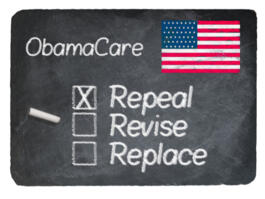Another Way We Overpay for Health Care
A Commentary By Froma Harrop
Little victories in curbing health care costs can add up. In truth, they seem little only next to the titanic $2.6 trillion Americans spend a year on health care. So let us salute them.
Case in point, the Medicare Payment Advisory Commission (Medpac) proposes ending a ridiculously expensive practice: Medicare paying hospital outpatient departments vastly more than it does doctors providing the same routine service in their offices.
Here are two examples, courtesy of The Seattle Times: Woman goes to a dermatologist at Seattle's Roosevelt Clinic for the same treatment she received in an earlier visit to a doctor's office. But this time she gets two bills -- $109 for the doctor and $228 for the privilege of seeing the doctor in real estate owned by the hospital. This is the "facility fee."
A retired Seattle doctor offers a similar story. His wife consulted a doctor -- no procedures done -- in a hospital clinic and received a facility charge of $177 in addition to the doctor's bill of $139. The sum total came to $316 -- this for a 15-minute chat in a 10-by-10-foot office space, no water view.
Small wonder hospitals have been buying up physician practices. That way they can drag more patients onto their premises and tack facility fees onto their bills. In Washington state, for example, 2 percent of the cardiologists were employed by hospitals in 2007. Now 42 percent are.
You know the echocardiogram, that test where the doctor sticks those thingies on your chest to check out your heart. For Medicare beneficiaries, the government and patient pay a total of $188 for an echocardiogram in a doctor's office. They are charged $452 for the same thing done in a hospital outpatient department.
There is no conceivable reason for doing a routine echocardiogram in a hospital setting other than improving the hospital's revenue stream. In answer to the question, "What risks are there from the (echocardiogram) test?" the Harvard Medical School responds, "There are no risks."
So Medpac has come up with an eminently reasonable proposal: "Medicare should base payment rates on the resources needed to safely treat patients in the most efficient setting, adjusting for differences in patient severity." Translation: Go to the least expensive setting, while taking the patient's condition into account.
Some private insurers are already on the case. Seattle-based Group Health Cooperative has told the hospital systems it contracts with that it will no longer pay their fees for ordinary visits to the doctor. And, as a nice touch, it won't let them saddle patients with them, either.
Naturally, hospitals don't like this kind of talk. They moan of the costs of their emergency rooms, their expensive regulations and the allegedly paltry sums Medicare pays them for outpatient care (all the while advertising for Medicare patients).
Left unspoken is the soaring compensation of hospital executives. Some get multimillion-dollar pay packages tied to how many bodies they get through the hospital door. Theirs is a good business.
We were speaking of how minor victories in curbing medical costs can add up to healthy savings. Medpac identified 66 groups of services performed in hospital outpatient departments that could be done in a doctor's office.
By paying the doctor's office rate for them, Medicare and its beneficiaries would save $900 million a year. Another $600 million a year could be saved for 12 groups of services commonly performed in ambulatory surgical centers but often done in more expensive hospital settings.
Put these numbers together, and you have $1.5 billion a year in savings. That's not a shabby number, even when floating in the ocean of American health care spending.
Follow Froma Harrop on Twitter @fromaharrop.
COPYRIGHT 2013 THE PROVIDENCE JOURNAL CO.
DISTRIBUTED BY CREATORS.COM
See Other Political Commentary.
See Other Commentaries by Froma Harrop.
Views expressed in this column are those of the author, not those of Rasmussen Reports. Comments about this content should be directed to the author or syndicate.
Rasmussen Reports is a media company specializing in the collection, publication and distribution of public opinion information.
We conduct public opinion polls on a variety of topics to inform our audience on events in the news and other topics of interest. To ensure editorial control and independence, we pay for the polls ourselves and generate revenue through the sale of subscriptions, sponsorships, and advertising. Nightly polling on politics, business and lifestyle topics provides the content to update the Rasmussen Reports web site many times each day. If it's in the news, it's in our polls. Additionally, the data drives a daily update newsletter and various media outlets across the country.
Some information, including the Rasmussen Reports daily Presidential Tracking Poll and commentaries are available for free to the general public. Subscriptions are available for $4.95 a month or 34.95 a year that provide subscribers with exclusive access to more than 20 stories per week on upcoming elections, consumer confidence, and issues that affect us all. For those who are really into the numbers, Platinum Members can review demographic crosstabs and a full history of our data.
To learn more about our methodology, click here.



